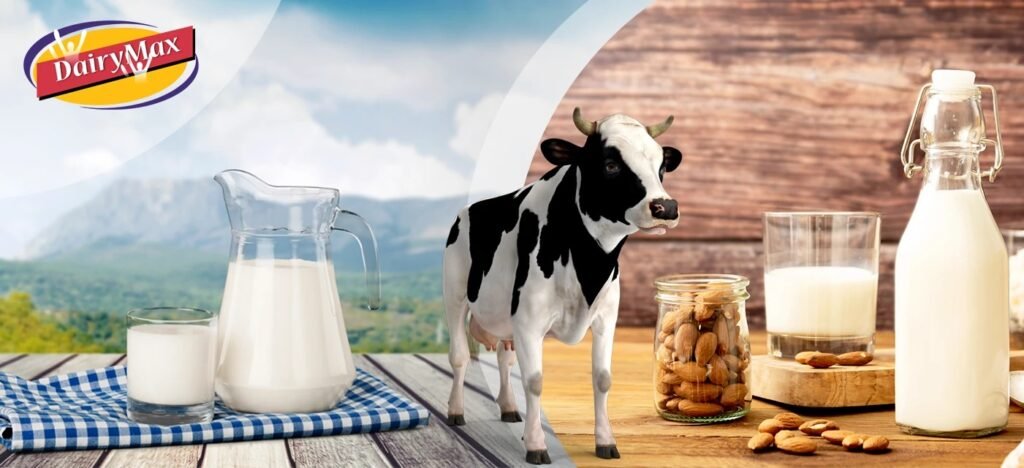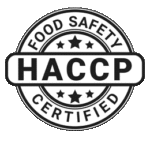As consumers become increasingly aware of the environmental impact of their food choices, the debate between dairy milk and its alternatives continues to gain prominence. In Ontario, where the iconic bagged milk has long been a staple, the shift towards sustainability is prompting a revaluation of our daily choices. This blog explores the environmental footprints of both traditional dairy milk and newer milk alternatives to help you make informed decisions that align with a commitment to a healthier planet. Understanding the production processes, resource usage, and overall sustainability can guide us towards choices that not only benefit our health but also minimize our ecological impact.
Environmental Impact of Dairy Milk

Resource Intensive Farming Methods
Dairy farming requires a significant amount of resources, including large quantities of water and feed. Usage of water is not just there in hydrating the cows but also in the processing of milk and the cleaning of equipment. For instance, it takes about 628 liters of water to produce just 1 liter of cow’s milk. Moreover, the land used to grow feed for dairy cows often involves the use of intensive agricultural practices which may lead to soil degradation. It’s imperative to understand that the extensive resources required for dairy farming highlight a high environmental footprint.
Greenhouse Gas Emissions
Dairy cows produce methane, a potent greenhouse gas, during their digestive process. Additionally, the entire dairy sector contributes to emissions from sources like manure management, feed production, and the energy expended in the processing and transportation of milk. According to some studies, the dairy industry accounts for nearly 4% of all global anthropogenic greenhouse gas emissions. This significant amount of emissions plays a critical role in global warming and climate change, signaling a dire need for emission control in dairy farming practices.
Environmental Impact of Milk Alternatives
Land Use and Water Consumption
The production of milk alternatives typically requires less land and water compared to traditional dairy milk. Almond milk, for instance, is often pointed out for its high water usage, but even it uses significantly less water than dairy milk. Oat milk and soy milk are more favorable in terms of water consumption, with soy milk using about 28% less water than dairy milk. However, the land used to grow these crops must be taken into account. While generally lower than that required for dairy farming, the cultivation of almonds and oats can still contribute to deforestation and loss of biodiversity if not managed responsibly.
Packaging Waste
One of the less discussed but crucial aspects of milk alternatives is the packaging waste they generate. Most milk alternatives come in cartons or plastic containers that are often not fully recyclable. For instance, many brands use composite packaging with mixed materials which complicates the recycling process. This leads to increased landfill waste unless stringent recycling practices are followed. Awareness and selection of environmentally friendly packaging options are essential for reducing this impact.
Transportation and Distribution
The global distribution of milk alternatives can contribute significantly to their carbon footprint. Transporting these products from the place of production to the consumer involves the emission of carbon dioxide and other pollutants. The further the transportation, the higher the emissions. Locally produced alternatives tend to have a lower carbon footprint in comparison. Additionally, the refrigeration required during transit and at retail locations consumes energy, adding to the environmental cost. Therefore, considering local and less resource-intensive options can be a more sustainable choice for the environmentally conscious consumer.
Comparing Sustainability Factors
Carbon Footprint
The carbon footprint of a product is a pivotal factor to consider when evaluating its environmental impact. Dairy milk production is known for its significant carbon emissions, primarily due to the methane produced by cows, along with the emissions linked to feed production, and farm operations. In contrast, milk alternatives typically offer a lower carbon footprint. For instance, almond, soy, and oat milks emit fewer greenhouse gases compared to cow’s milk. However, it is crucial to consider the complete lifecycle of these alternatives, as some, like almond milk, may require more resources in other areas, such as water use.
Water Usage
Water usage highlights a variable yet concerning aspect of both dairy and plant-based milk production. Dairy farms consume substantial volumes of water, not only for the cows but also in the process of growing feed and maintaining the farming facilities. On the other hand, while certain milk alternatives like oat milk use considerably less water, others can be resource-intensive—almond milk, for instance, is remarkably water-intensive, primarily due to the water demands of almond agriculture, notably in areas like California where water scarcity is a pressing concern.
Waste Generation
Waste generation is another essential component of sustainability. Dairy milk production leads to a variety of waste forms, including manure and other agricultural run-offs which can potentially lead to environmental degradation if not managed properly. The production of milk alternatives can also result in considerable waste, particularly in the form of by-products from the plant material used to create the milks. However, many companies are now finding innovative ways to use this waste, such as creating new products or enhancing soil health through composting, hinting at potential sustainable solutions, provided these practices are widely adopted.
Consumer Considerations
Health Benefits and Drawbacks
Choosing between dairy milk and its alternatives often involves health considerations. Dairy milk is rich in calcium and fortified with vitamins D and A, making it beneficial for bone health. However, it contains saturated fats and cholesterol, which may raise concerns for cardiovascular health. Milk alternatives, such as soy and almond milk, often have lower levels of saturated fat and no cholesterol, benefiting heart health. They are also lactose-free, catering to those with lactose intolerance. Nevertheless, some alternatives may contain added sugars and lack the natural nutrients found in cow’s milk, making fortification a common practice.
Cost Comparison
From an economic standpoint, comparing the cost of dairy milk to its alternatives reveals some disparity. Generally, dairy milk tends to be cheaper due to the well-established supply chains and government subsidies in many regions, including Ontario. Milk alternatives can be more expensive, reflecting the smaller scale of production and higher processing costs. However, the price varies widely depending on the type and brand, and as demand continues to grow and production methods improve, the cost of milk alternatives is gradually decreasing, making them a more accessible option over time.
Conclusion: Making Informed Choices for a Greener Future
The decision between dairy milk and milk alternatives is not just a personal preference but also a significant ecological consideration. Understanding the environmental impact of both dairy and non-dairy products is crucial for making sustainable choices. Dairy milk production is resource-intensive, contributing significantly to carbon emissions, water usage, and land degradation. Conversely, milk alternatives often require less water and produce fewer emissions but may involve other trade-offs such as deforestation for crop production.
To navigate this complex landscape, consumers are urged to consider the full environmental footprint of their choices. This involves looking at local production practices, the transparency of milk brands in Ontario, and the overall sustainability efforts of the companies involved. By opting for products from businesses that prioritize ecological balance, consumers contribute directly to a more sustainable food system.
In conclusion, every choice matters. Being informed about the impacts of these milk options will empower you to make decisions that are better for the planet. Whether you choose dairy or a plant-based alternative, aim for options that align with sustainable practices and support ecological health.





